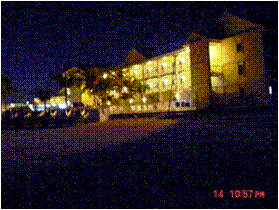 On a natural beach, the lighter seaward horizon guides the hatchlings to the water. Artificial lights, however, confuse the hatchlings and they wander inland. Lost and disoriented, they soon die from dehydration, heat exhaustion or being crushed on nearby streets.
On a natural beach, the lighter seaward horizon guides the hatchlings to the water. Artificial lights, however, confuse the hatchlings and they wander inland. Lost and disoriented, they soon die from dehydration, heat exhaustion or being crushed on nearby streets.
Lee County itself contains more than 40 miles of beach habitat suitable for sea turtle nesting. In an effort to help this threatened species survive, all local coastal governments have adopted and do enforce Sea Turtle Conservation Codes.
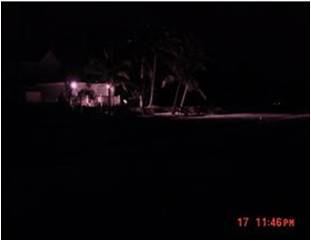 Compliance with these regulations has resulted in thousands of successful sea turtle hatchlings safely reaching the Gulf of Mexico. Sea turtles are protected under the
US Endangered Species Act (ESA) as well as the
Florida Statutes. Violations defined by ESA include harassing a nesting female, taking hatchlings or disturbing a nest.
Compliance with these regulations has resulted in thousands of successful sea turtle hatchlings safely reaching the Gulf of Mexico. Sea turtles are protected under the
US Endangered Species Act (ESA) as well as the
Florida Statutes. Violations defined by ESA include harassing a nesting female, taking hatchlings or disturbing a nest.
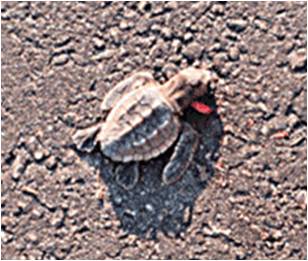
Lights visible from the beach alter the critical nocturnal behavior of sea turtles:
how female sea turtles choose their nesting sites, how they return to the sea after nesting, and how the newly emerged hatchlings find their way to the ocean.
picture courtesy of Turtle Time, Inc.
How Can You Help?
May 1 through Oct. 31 of each year, beach residents must shield all lights that can be seen from the beach from 9 p.m. to 7 a.m. Light can travel great distances, so shielding is important to reduce visible light along the beach.
Lights may not directly or indirectly illuminate the beach. Even reflected light can disorient sea turtles. Interior lights can also illuminate the beach. Please close curtains or blinds after 9 p.m.
May 1 through Oct. 31:
- Lights may not directly or indirectly illuminate the beach from 9 p.m. to 7 a.m.
- Turn off or shield all lights visible from the beach.
- Replace lights with a 25-watt yellow bug bulb or an amber colored LED light bulb.
- Close curtains or blinds to prevent interior lights from shining onto the beach.
- Remove beach furniture and equipment from the beach each night from 9 p.m. to 7 a.m.
Remember:
-
KEEP IT LOW – Low mounting height and low bulb wattage. Flood, spot and pole lighting are highly discouraged.
-
KEEP IT SHIELDED – Use fully shielded fixtures that direct the light down to the ground. Shield fixtures so you cannot see the bulb, lamp or glowing lens.
-
KEEP IT LONG – Sea turtles are less disturbed by the long wavelengths of light (570 nanometers or longer), lights that are yellow, amber, or red in color, such as 25-watt yellow bug or amber colored LED lights.
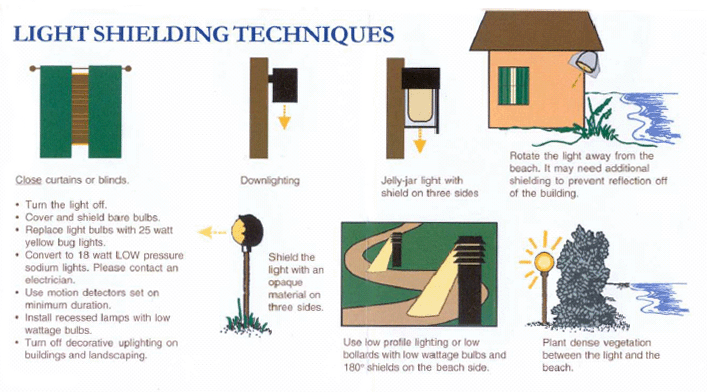
Examples of good lighting fixtures suitable for use near sea turtle nesting beaches:
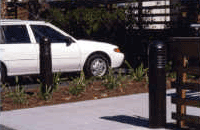 bollards (low profile lights) along a sidewalk | 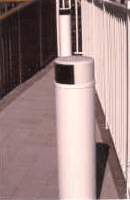 bollard with louvers and a 180-degree shield on the beach side | 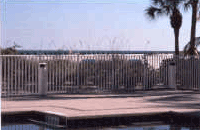 shielded lighting with dune vegetation between the lights and beach |
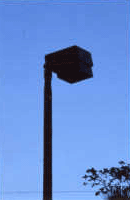 downlight on 12-foot pole in parking lot | 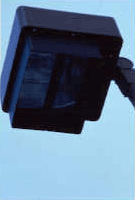 downlight with shield and baffle | 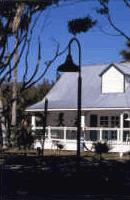 downlight |
Examples of certified lighting solutions:
Lighting examples courtesy of
Florida Fish and Wildlife Conservation Commission.